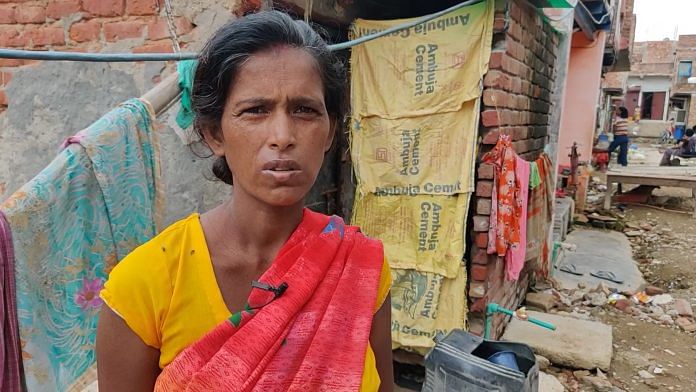Surrounded by piles of rotting garbage and clogged drains, Mira Devi lives with her family of seven in a shanty. Until recently, this large family had only one earning member. Today, it has none. Her young daughter died in Delhi’s Mundka industrial area fire with 26 others in May. She used to assemble and pack CCTV cameras and routers to earn a meagre monthly income of Rs 7,500 to support her parents and siblings.
But now, Mira is battling grief, loss and the labyrinth ‘proof raj’—Indian compensation bureaucracy’s unending demand for documents and proof.
Inside the small structure of unpainted brick walls and a single light bulb, one of Mira’s disabled daughters is staring blankly into space, next to her drunk father, unperturbed by the wailing of his infant daughter. Mira’s other children are out on the streets, escaping their poverty-stricken home.
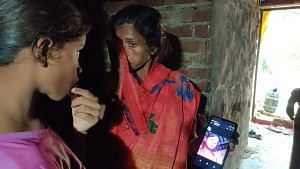
“Sometimes I want to take all my children and run away to start life afresh, leaving him (referring to her husband) here alone. He brings no money home. My daughter was the only one earning and she has left us forever,” says Mira, her eyes welling up with tears.
On 13 May, her 20-year-old daughter, Nisha, was charred to death in a deadly fire which engulfed an illegal four-storey building—her office—in Mundka. Since her death, there is food in Mira’s house only when the relatives or neighbours lend them some money or give them some grains.
Also Read:
Long wait for compensation
A day after the tragedy, Delhi Chief Minister Arvind Kejriwal announced Rs 10 lakh each for the families of the victims and Rs 50,000 for those injured. But it has been almost three months and the Delhi labour department is yet to process the payment for the families, almost all of whom are living in resettlement colonies of Rani Khera, a few kilometres from Mundka. From filing police complaints to DNA tests, the families must establish their relationship with the dead. Each day’s trip to the government offices means a day’s labour lost in addition to the cost of commuting.
Many of the victims, like Nisha, had several people dependent on their income. The Mundka fire tragedy, notes a fact-finding report by a team of NGOs and trade unions, “is the story of women’s work in the city—informal, low skilled, low paid, unregulated, unrecognized, invisible and undervalued.”
Besides the compensation offered by the chief minister, the families of the victims are also entitled to compensation under the Workmen’s Compensation Act 1923, where the employee must pay the families of the victims in case of death or injury. The building which caught fire was running a factory, storehouse and an office on different floors. Hence, it falls under various labour laws.
Those who survived the accident said they have no information if their compensation is even being processed. Deputy labour commissioner, A. K. Biruly, told the Print that the applications are underway and the compensation commissioner has been given a month to clear the dues.
But in these migrant homes, where hunger and depravity are everyday battles, a month-long wait may be crippling.
Also Read:
The apathy and the struggles
There are about 30 approved industrial centres in Delhi—Mundka isn’t one of them. In the muddy, garbage-strewn narrow lanes of the township, which has expanded unplanned—horizontally and vertically—office and factory buildings operate without any scrutiny. Migrant families living in colonies around Mundka provide cheap labour to these offices which blatantly flout labour laws.
Women from Rani Khera’s Bhagya Vihar, the colony of impoverished settlers from Uttar Pradesh and Bihar, made up a chunk of the staff at the office of Cofe Impex Private Limited, which caught fire. For them, the building not having No Objection Certificate (NOC), fire alarm, extinguishers or exits, were not precursors to taking up work in such companies.
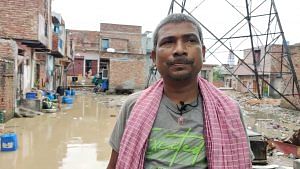
With her husband working in mines in Alwar, Rajasthan and a loan of Rs 1.25 lakh on him, 35-year-old Yashodha worked relentlessly for four years in the company to augment the household income. With her monthly salary of Rs 10,000, which is below the minimum wage of Delhi at Rs 16,506 for unskilled workers, she would take care of the household expenses and her children’s education. A part of it was kept aside to repay the loan.
On the night of the fire, Yashodha could not be saved.
When her husband, Vishawajeet, and the family members of other victims tried to get the compensation which the CM had announced, they got a first-hand experience of the system they are fighting against.
“We tried to meet the CM four times, but could not meet him even once. We were told he is not in the office, or that he doesn’t have time. Each time, we filed an application and left,” says Vishawajeet.
He faced similar humiliation in other departments as well, where he was made to wait all day by bureaucrats only to be told that his application did not have the DNA report or a copy of the FIR or the Aadhaar card, and so on.

On 6 July, the families received Rs 1 lakh in their bank accounts from the Delhi government. But the hardships which they have been going through in the last three months could not be covered with this small amount, families say.
“When my son’s body was brought home, we did not have money to even perform his last rites. Our relatives and neighbours contributed and from that one lakh, I repaid them. I still owe money to people,” says Mithilesh, who lost his 24-year-old son, Vishal, who had been working in the company since 2015 for a meagre income of Rs 9,000.
Many of the families said they are not even aware of the compensation they are entitled to from the company’s owners—Harish Goyal and Varun Goyal.
“All those workers who were working in the factory when the accident happened must be compensated by the owner. But when we met the families, we realised they were not aware of the labour laws,” explains Anurag Saxena, general secretary, Centre of Indian Trade Unions.
Guiding the families through the claims process, the NGOs and unions visited the Lieutenant-Governor’s office and met Delhi labour minister Manish Sisodia, but it bore no result.
They then took the fight to the labour department. On 7 July, a group of Delhi trade unions along with families of the victims organised a protest in the office of Joint Labour Commissioner of Delhi, Gurmukh Singh, who is in charge of processing the applications for compensation. Singh said that the kin of victims are untraceable, families have not filed claims yet and that the owners of the factory are in jail so the department is not able to serve them notices, claims Saxena.
“When the NGOs, unions and the media could find kins, why couldn’t the department find them? They just never looked for them,” says Saxena. He added that if owners are in jail, notices can be served to their lawyers or families.
ThePrint reached out to Singh multiple times but he did not respond.
Meanwhile, Biruly said that Singh is on the job. “Proceeding is going on based on whatever reports we have got from the police. My compensation commissioner (Singh) has already initiated action and there is a deadline which is given to the office also. Now the claimant has to come with some of the evidences (to establish kinship),” he said.
Also Read:
The illegalities
Underpaid and working without any safety nets, 27 people–21 of them women—died in that fire, says the Delhi government’s official data. But the forensics lab that tested the DNA samples says there were more than 27 bodies. No one, however, has come forward to claim them.
Some of the victims had been working in the company for seven years. However, the documents filed with the Ministry of Corporate Affairs show that two companies—I-Clear Technologies and Cofe Impex—operating from that building were registered only in 2019. They had the same address and were doing the same work of manufacturing electrical equipment. None of the workers ThePrint spoke to could name the company they were employed by.
The building was under the Municipal Corporation of Delhi’s Najafgarh zone before the MCD was trifurcated in 2012. Its records show that it is 11 years old.
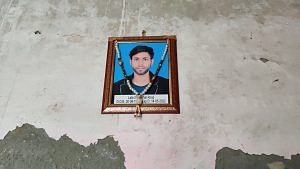
No property tax was ever paid on it, it did not have a factory license and the owner never applied for sanction of the building plan, which was built illegally on lal dora or village land. No factories or industries can operate on this land.
The workers of the factory had no proof of employment. They were never given any contract or pay slips. Most of the employees were given salary in cash, which was far below Delhi’s minimum wage, after an entry in the register.
The building’s single entry and a tough fibreglass outer covering with no windows sounded the death knell for hapless victims as it trapped the smoke inside.
As a reaction to the accident, the North Delhi Municipal Corporation suspended three officials. The owners, now in judicial custody, have been slapped with Sections 304 (causing death by negligence), 308 (attempt to commit culpable homicide), and 120B (party to criminal conspiracy) of the Indian Penal Code.
Also Read:
Not the only fire tragedy
Mundka, however, is not the only fire accident which exposes the unregulated and unsafe industrial units operating with an alleged deep nexus between building and company owners, police, government departments and municipal corporations.
A month after the Mundka tragedy, a massive fire broke out in a plastic godown in the Badli area behind Rohini jail. A few days later, a factory in Mangolpuri Phase-1 area caught fire. In December 2019, a fire at a factory producing school bags and shoes in Anaj mandi in Delhi killed 43 people who were sleeping inside.
In 2022 alone, between 1 January and 30 June, 10,350 fire incidents were reported in Delhi, killing 60 people and injuring 395 others, according to Delhi Fire Service data.
The process of compensation had been long and arduous in each one of them.
Also Read: The fake ‘spy thriller’ that cost Nambi Narayanan his career, life savings and self-esteem
Damage control
Simple changes in government perception of fire accidents can change how justice is delivered to the victims, says Neelam Krishnamoorthy, who led the fight for justice for her two children who were among 59 victims of the fire tragedy at Delhi’s Uphaar Cinema in 1997.
“These cases should not be booked under section 304A of the IPC. Why can’t we have a tribunal on the lines of motor accident claim tribunal for manmade disasters like fires where decision is taken immediately and victims don’t have to go to courts?” says Krishnamoorthy, who fought the case as president of the Association for Victims of Uphaar Tragedy for 25 years, only to get a judgment in favour of the Ansal brothers, owners of Uphaar Cinema.
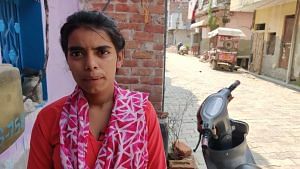
It is the same story in every fire incident—short circuit, exits not available, no fire extinguishers. Things that can be easily managed, she adds.
While Krishnamoorthy took up the fight for her children, it is impossible for an ordinary citizen to go through this process. In Mundka, those currently fighting this battle agree.
Vishal’s sister, Pooja, is appalled by the lack of sensitivity shown by government departments. She relates to Vishawajeet’s ordeal. “For the last three months I have been running around for the paperwork for the compensation. And after all this, the government just gave us a token amount like they are giving us alms,” she says.
(Edited by Zoya Bhatti)


